Published November 2, 2023
-
14 mins read
Strategic Approaches to Committee Meetings: Enhance Productivity, Governance, and Success

Shaimaa Badawi

Committee meetings are the cornerstone of effective decision-making and collaboration within organizations. They serve as structured forums where designated groups of members convene to deliberate, strategize, and achieve specific objectives outlined in committee charters.
These gatherings are instrumental in shaping the course of an organization's actions, whether it's crafting policies and procedures, making pivotal decisions, or providing valuable input to higher levels of leadership.
In this article, we will delve deeper into the world of committee meetings, exploring their purpose, selection of members, challenges, and the indispensable role of Robert's rules of order in ensuring productive and ethical deliberations.
What are committee meetings?
Committee meetings are formal sessions conducted by a designated group of members within an organization. These members gather to achieve specific objectives, and their purpose is often outlined in a committee charter.
Committees typically have specific titles that reflect their function, such as an "executive committee," "conference committee," or “corporate governance committee.”
What is the purpose of committee meetings?
The primary aim of these meetings is to facilitate brainstorming sessions so that the committee can accomplish its tasks.
Such meetings are essential in organizational structures, allowing members to deliberate on various issues, from the creation and review of policies and procedures to making critical decisions like hiring, budgeting, or providing feedback to higher organizational levels.
Who selects committee members?
Committee members are usually chosen by the management or board of directors due to their expertise in the relevant field or their role in implementing the committee's decisions.
Because of this selectivity, committee meetings tend to have lean meetings, involving fewer participants than other meetings. For instance, a steering committee might comprise only project managers and a few advisors with relevant expertise.
What are the rules of committee meetings?
Unlike regular business meetings, committee meetings often need to adhere to specific regulations. These can include requirements for meeting frequency, achieving a quorum, voting on procedures, and keeping accurate records of meeting information.
A chairperson or president typically oversees these meetings to ensure they run smoothly and productively. Once a committee achieves its goal, especially if it operates as a project-based team, it might be terminated. On the other hand, some committees, particularly those serving as governing bodies, might oversee organizational functions for extended periods.
What are Robert's rules for committee meetings?
Robert’s rules of order, commonly referred to as Robert’s rules, is a definitive guide that provides a set of ethical codes and rules for conducting discussions and decision-making in organizations, especially those with boards of directors and committees.
Established as a means to ensure systematic, orderly, and purpose-driven meetings, this framework has become the gold standard for many organizations, fostering an environment where both majority decisions and minority voices receive equal weight.
Applicability of Robert's rules for committee meetings
The application of Robert’s rules spans a wide range of settings, encompassing nonprofit boards, committees, and long-standing groups. These rules act as a parliamentary beacon, ensuring discussions progress in a structured manner, and fostering an atmosphere conducive to fair and organized consensus-building.
Basic principles
- Equality in participation: every member is granted equal rights and responsibilities.
- Presence of quorum: a quorum is imperative for the conduction of any official business.
- Civility in discussions: personal remarks or derogatory comments are strictly prohibited during debates.
- Structured discussions: at any given time, only one issue can be addressed, and a singular person is permitted to speak.
- Transparency in voting: before a vote ensues, members should be thoroughly acquainted with the impending question.
- Open debate: every primary motion is entitled to a thorough and unrestricted discussion.
- Majority rules: except in cases involving fundamental member rights or when a specific rule dictates otherwise, the majority's decision is final.
- Protection of members' rights: any motion that might infringe upon a member's rights necessitates a 2/3 majority for approval.
- Implicit consent: members who abstain from voting inadvertently authorize the decision to be determined by the voting members.
- Impartiality of the chair: the chairperson is bound by a duty to remain neutral and unbiased at all times.
Order of business according to Robert's rules
- Past meeting minutes review and approval.
- Presenting reports from standing committees, board members, and executive officers.
- Special committee reports, based on committee appointment order.
- Addressing special orders from previous meetings, including electing or nominating new officers.
- Resolving general orders and unfinished business from the last meeting.
- Introducing new orders of business by members.
Optional:
- Roll call to verify members’ attendance.
- Opening activities like invocations or anthems.
- Consent calendar to approve routine matters unless objected to.
- Open forum to discuss informal remarks about the organization's welfare.
- Program segment to present cultural or educational notions.
How to make a motion in board and committee meetings
Types of motions according to Robert's rules
- Main motions: addressing specific subjects before the meeting.
- Subsidiary motions: influencing how the main motion is addressed, e.g., postponing or amending the motion.
- Incidental motions: relating to meeting procedures, like pointing out rule violations.
- Privileged motions: addressing urgent issues, such as ensuring the meeting follows the planned order, ending the meeting, or requesting a recess.
Steps to make a motion
- Obtain the floor: members should be recognized by the Chair before speaking.
- State the motion: the motion must be clearly phrased.
- Secure a second: most motions require another member to second them or else may be discarded.
- Debate the motion: members can engage in debate once the motion is on the floor.
- Call for a vote on the motion: voting methods vary based on organizational by-laws, such as roll call, voice vote, general consent, division, and ballot.
- Announcing the outcomes of the vote: further actions based on the vote’s result may take place.
What is a quorum for committee meetings?
A quorum is the minimum number of members in a group or organization required to be present for official business to be validly conducted. The specific number is typically determined by the organization's bylaws.
Purpose and significance of a quorum
The establishment of a quorum ensures that decisions made by a group represent a broader consensus rather than the views of just a few individuals.
Without adherence to quorum requirements, there is a risk that a small subset of members may wield disproportionate influence, potentially leading to decisions that do not reflect the best interests of the entire group.
Robert’s rules on quorums
Robert’s rules offers guidance on quorums, detailing the protocols for determining what constitutes a quorum, how to modify bylaws related to it, and emphasizing the importance of notifying members about significant meetings.
The rules define a quorum as the minimum number of voting members needed at a properly convened meeting to transact business on behalf of the group.
While Robert’s rules provides a general framework, it allows flexibility in the definition of a quorum to cater to the unique needs of various organizations.
Establishing a quorum
Quorum ratio: before addressing the meeting's agenda, the board chair must verify if a quorum is present. Most bylaws provide guidelines for what constitutes a quorum. If not explicitly mentioned, a simple majority, such as 51% of the board, is typically considered the quorum.
Factors to consider: when setting or revising a quorum requirement, it's crucial to think about:
- The typical attendees of board meetings.
- The need for balanced and holistic decisions.
Setting the quorum
The quorum can be defined either as a percentage of total membership or a fixed number. Some organizations might set a high quorum percentage to promote meeting attendance. Others, especially those with typically low attendance, might opt for a lower quorum percentage. In some cases, especially for smaller boards, the quorum might be as low as two or three members.
What are the different types of committee meetings?
Committee meetings are integral to the effective operation of an organization, enabling thorough analysis and decision-making on vital issues.
1. Standing committee meetings
Standing committees are the backbone of a board of directors, often entrenched in the organization's bylaws or operational guidelines. They hold a predominant influence over an organization’s overarching direction, projects, programs, and mission. Their purpose is ongoing, dealing with the consistent high-priority challenges of the organization and finding suitable solutions.
Steering committees, remuneration committees, and governance committees are examples of standing committees.
- A steering committee is typically composed of senior executives, stakeholders, and project managers, focusing on providing strategic direction and vision to a project. While not involved in daily management, they offer vision and recommendations to facilitate effective deliberation and decision-making by “steering” the project in the right direction.
- A governance committee oversees the compliance of an organization, ensuring the board fulfills its responsibilities and supervising member recruitment and retention. They aid in recruiting board members and make decisions about member retention or removal. Their meetings, attended by both directors and non-executive directors, focus on key governance and compliance matters.
- A remuneration committee plays a vital role in determining the compensation and incentives for an organization's directors. They establish remuneration policies and set performance targets. Typically consisting of a few independent, non-executive directors, these committees meet a few times annually to set, review, and assess directors' KPIs, ensuring alignment with the company's goals.
2. Ad hoc committee meetings
Ad hoc committees or task force committees are temporary and formed to address specific, unique challenges. These committees exist only for the duration needed to resolve the issue at hand, often disbanding within a year.
Examples include budgeting committee meetings, which define annual budget allocations, and litigation committee meetings, formed in response to particular legal challenges and comprised of in-house legal teams and subject-matter experts.
3. Advisory committee meetings
Advisory committees offer an external perspective to boards, primarily built from former board members, potential board candidates, and domain-specific experts. These committees don't hold governance power but are consulted for their specialized opinions.
4. Executive committee meetings
Executive committees play a pivotal role in administering rules and overseeing the operations of a board of directors. Their authority is defined by the organization's bylaws. Commonly, they comprise key board positions like the president, vice-president, treasurer, and secretary, though they can include sub-committee chairs based on the organization's needs.
Are committees open to the public?
Not all committee meetings are open to the public, but if they are, they’re called "public meetings."
Public meetings are mandated to remain open to the public throughout their duration. While the public can attend these meetings, their participation in board discussions is typically limited unless they receive a specific invitation. There's often a “public comment” segment during which the audience might be able to voice their thoughts or concerns.
The requirement for a committee meeting to be open to the public hinges on how the committee was constituted. If set up directly by a primary governing entity, by the presiding officer of such an entity, or through an executive order, then the committee is mandated to notify the public of its meetings and conduct them openly.
What challenges do committees face?
- Some committees, whether standing or ad hoc, are poorly managed and can end up being unproductive.
- A major issue causing unproductivity is the lack of clarity regarding the committee's objectives and goals.
- Committees sometimes operate based on incomplete or outdated information.
- Like boards, committees benefit from diverse opinions, and members should feel encouraged to ask challenging questions and share different perspectives.
An effective chairperson plays a crucial role in steering committee meetings, maintaining focus, and ensuring participation from all members. The chairperson facilitates reaching a consensus during meetings and addresses conflicts and differences in opinion constructively.
What are the keys to ensuring productive committee meetings?
- Committees should have a clear written charter or description detailing their purpose, duties, duration, and composition.
- A well-chosen committee chair is pivotal to the committee's success. This person should ideally be a board director and have relevant knowledge and experience pertinent to the committee's purpose.
- Effective committee chairs display strong leadership and communication skills. They guide meetings efficiently with a clear agenda and encourage diverse input from all members.
- The committee chair ensures the committee's actions align with the organization's policies, properly records decisions, and assigns and oversees tasks to committee members.
- A committee chair can also delegate specific topics or directions of the meeting to professional experts when needed, prioritizing the committee's success over personal interests.
How to run effective committee meetings?
The efficiency of committee meetings is paramount to harnessing their potential. Properly conducted meetings can significantly impact an organization's direction, while poorly run ones can hinder performance.
Hence, understanding and implementing effective committee meeting practices are vital for organizations to realize their full value. Check out this set of guidelines to run effective committee meetings.
1. Define the committee meeting’s purpose
Committee meetings must have a well-defined goal, often set by the board of directors. The clear purpose, whether it's discussing issues, making decisions, or planning events, guides the meeting and ensures efficient use of time, particularly when involving diverse stakeholders. If the purpose isn't clear, the need for the committee may be reconsidered.
2. Set a meeting agenda
Effective committee meetings start with a detailed agenda sent out before the meeting. This agenda should outline clear objectives, assign topic leads, and include time allocations for each discussion point.
The chairperson is responsible for ensuring the meeting adheres to this agenda, guiding the conversation efficiently, and deferring any overextended topics to a later time. Framing agenda items as specific questions allows members to prepare for discussions and ensures that meetings are productive and time-conscious.
3. Assign meeting roles and action items
Assigning meeting roles is essential for maintaining an organized committee meeting. To distribute these roles effectively, begin with volunteers. For a well-structured committee meeting, start with three fundamental roles: a chairperson, a note-taker, and a timekeeper. Each role plays a vital part in ensuring the meeting runs smoothly and efficiently.
End each committee meeting by defining the next steps. Assign stakeholders to specific action items and clarify the path forward. In the following meeting, verify that everyone has followed through on their tasks, keeping the group on track toward its goals.
To ensure progress on action items, have the assignees provide updates at each meeting. Communicate previous action item updates with them before the meeting to confirm accomplished tasks, and set time limits to avoid dominating the meeting.
4. Record decisions, voting results, actions, and notes
The meeting minutes serve as a pivotal aspect of maintaining committee meeting efficiency. Your appointed note-taker plays a critical role in this process, capturing the crucial points, discussions, decisions, and action items that transpire during the meeting. These records serve as essential references for future meetings and provide clarity for absent members.
The chair's responsibility includes conveying the necessary information to the note-taker, ensuring comprehensive coverage of all important aspects, including decisions, motions, actions, deadlines, and items tabled for future discussion.
Neglecting these aspects can lead to repeated discussions, uncompleted tasks, and confusion regarding responsibilities and deadlines. Effective documentation is, therefore, a crucial practice to foster effective committee meetings.
5. Generate and approve meeting minutes
Creating efficient meeting minutes is crucial. Highlight key details, like action items, for easy reference, keep minutes concise, ideally one or two pages, and send them promptly after the meeting, ensuring everyone has a record of their responsibilities.
Meeting minutes are not only a legal requirement for board and committee meetings, but also essential for accountability. The meeting minutes must be approved by the board or committee members before sharing them with participants and the chairman. They should reflect the meeting's structure, discussions, decisions, and action items.
adam.ai for committee meetings
If putting together a productive committee seems like a hassle, then planning committee meetings can be much more daunting. Virtual committee meetings have become more popular in recent years, especially with board and committee members' busy schedules.
To run successful online committee meetings, you need a set of tools for video-conferencing, note-taking, meeting minutes generation, and action and task management, to name a few.
Try adam.ai, an all-in-one meeting management solution that allows you to capture the knowledge of committee meetings and manage your entire meeting lifecycle before, during, and after meetings.
Here's what you can do with adam.ai:
1. Sync all your calendars on one platform and create unlimited booking pages to show your availability and accommodate the schedules of busy committee members.
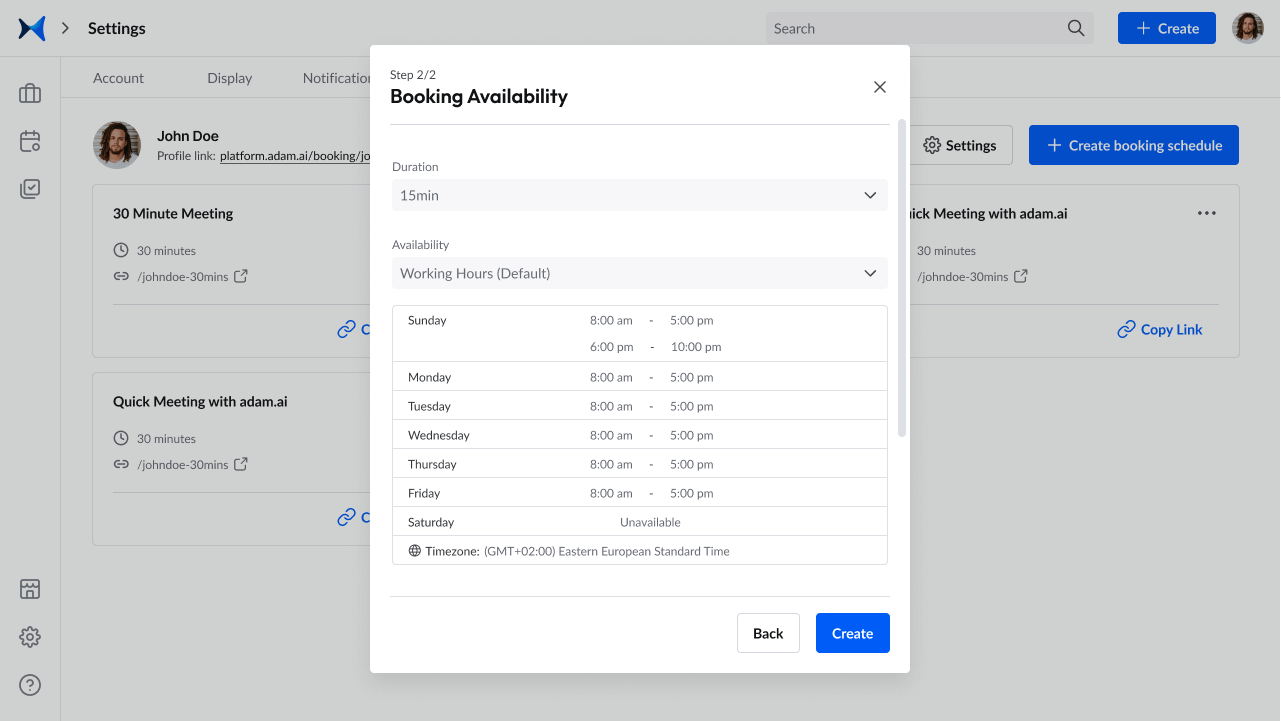
Screenshot from adam.ai: Booking pages.
2. Record agenda items, actions, polls, decisions, and notes using a smart note-taking system displayed side by side with the built-in video-conferencing feature for enhanced collaboration and productivity, with the ability to integrate with popular video-conferencing tools you're familiar with.

Screenshot from adam.ai: Video call displayed side by side with the meeting content.
3. Choose a customizable meeting agenda template from our gallery to kickstart preparation for your committee meetings to ensure organized and timely meetings.

Screenshot from adam.ai: Meeting templates.
4. Track your actions to ensure task ownership and accountability and improve decision-making with a powerful follow-up system with the ability to search for actions across all meetings.
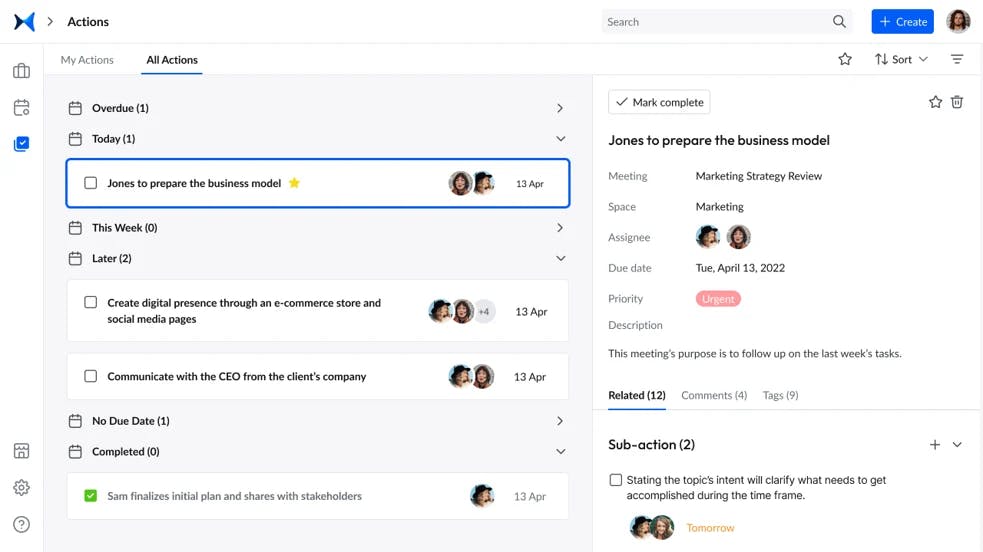
Screenshot from adam.ai: Manage actions.
5. Categorize meetings into spaces, including project, team, board, and committee, and have all their content under a specific umbrella for easy access.
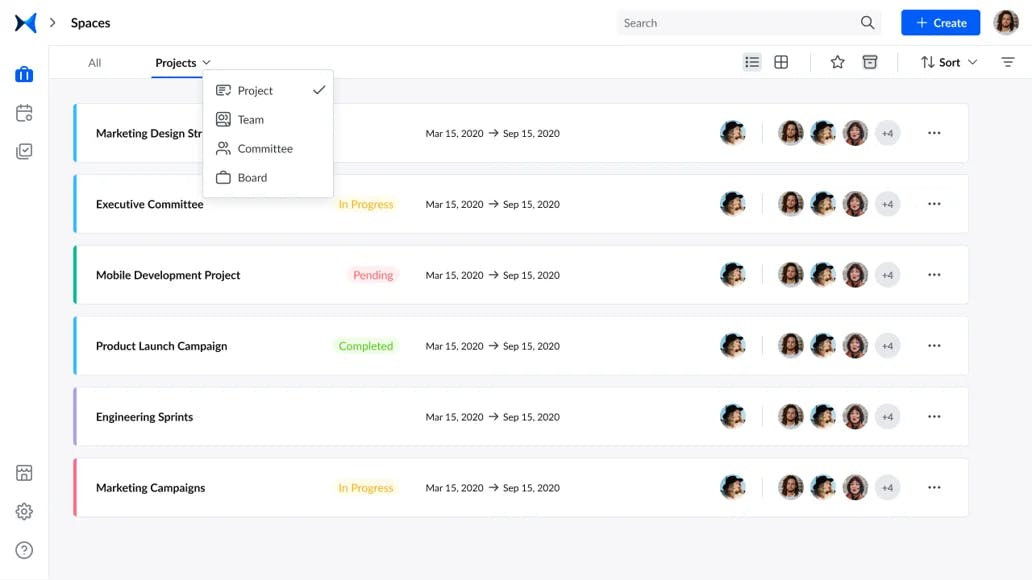
Screenshot from adam.ai: Meeting spaces.
6. Generate and share meeting minutes for due diligence in committee meetings and to keep a record for your reference.

Screenshot from adam.ai: Meeting minutes.
7. Ask Adam the AI Assistant to generate meeting transcripts, enhance your meeting content, suggest agendas, and highlight action items and key insights.
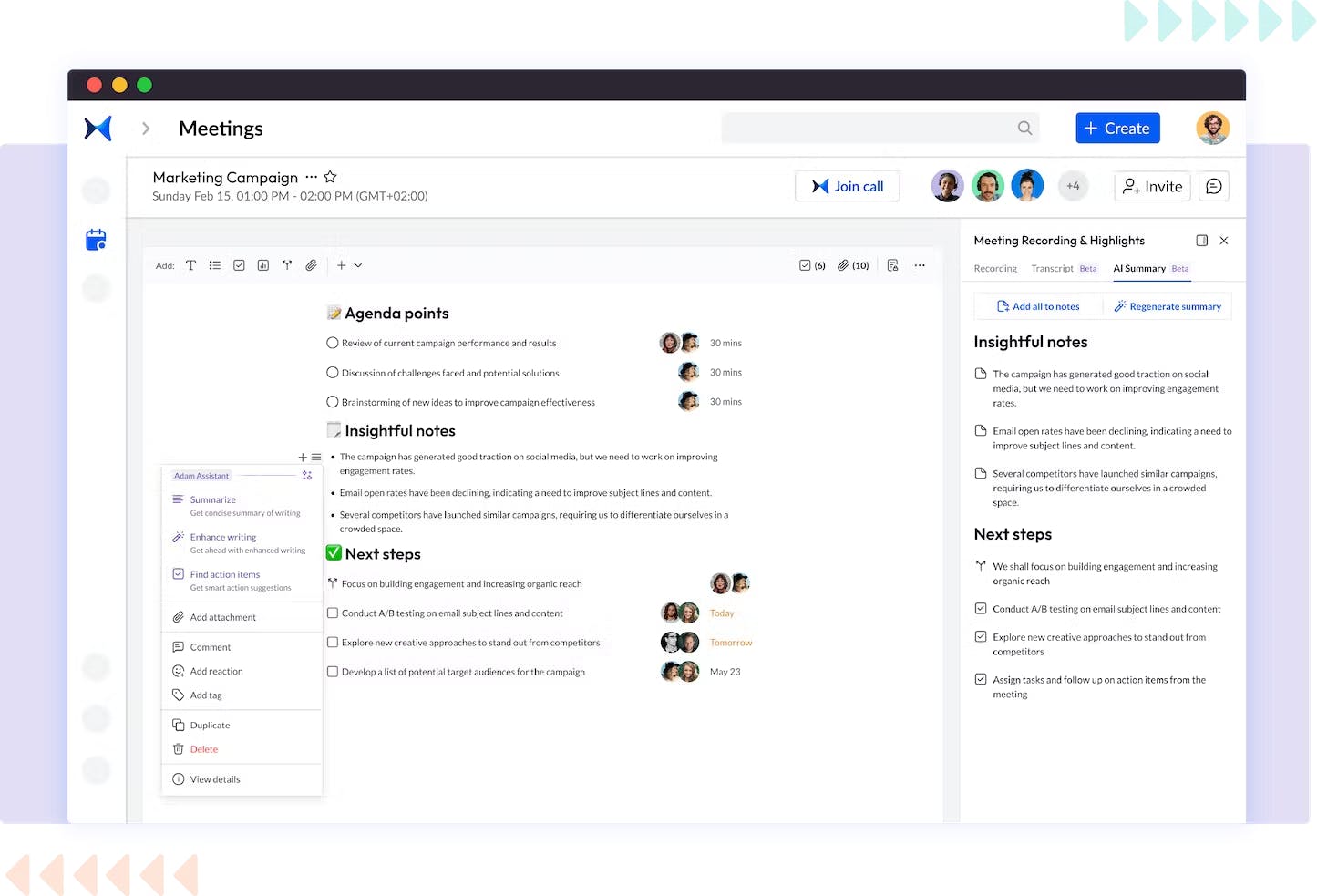
Screenshot from adam.ai: Adam the Assistant.
Get started right now for free to experience the true meaning of all-in-one meeting management.
The bottom line
Committee meetings are a vital structure of organizational governance and strategic planning, covering a diverse range of topics, from quorum requirements to the challenges they face and the keys to their success.
By embracing the principles and insights presented in this article, organizations can ensure that their committee meetings remain productive, inclusive, and ethical, ultimately guiding them toward achieving their objectives and driving progress in their respective fields.
We recommend using an all-in-one meeting management solution, like adam.ai, that empowers you to manage your entire lifecycle and run effective committee meetings.
And while there may be multiple meeting management solutions available, here is why adam.ai is the all-in-one meeting management platform you can trust:
- adam.ai is one of Atlassian Ventures' portfolio companies.
- In the meeting management software category on G2, adam.ai has been ranked a leader and a high performer for successive quarters in the past years.
- adam.ai has been included in the Forrester Report in the AI-enabled meeting technology landscape.
- adam.ai is trusted and used by powerful teams and organizations worldwide for all types of critical meetings, like board, committee, project management, and business development meetings.
- And most importantly, adam.ai integrates with your existing workflow, is SOC2 compliant, provides dedicated support and success, and has a free trial option.
About the author ...
Shaimaa Badawi is an Inbound Marketing Specialist at adam.ai. Her research revolves around meeting management, project management, and board meetings, where she identifies the most daunting meeting pain points that C-level executives, board and committee members, corporate secretaries, and other professionals working in enterprises face in meetings. Based on her findings, Shaimaa provides solutions for inefficient meetings, defines various aspects of corporate-level meetings, and outlines best practices on how to run effective meetings.
Recommended for you
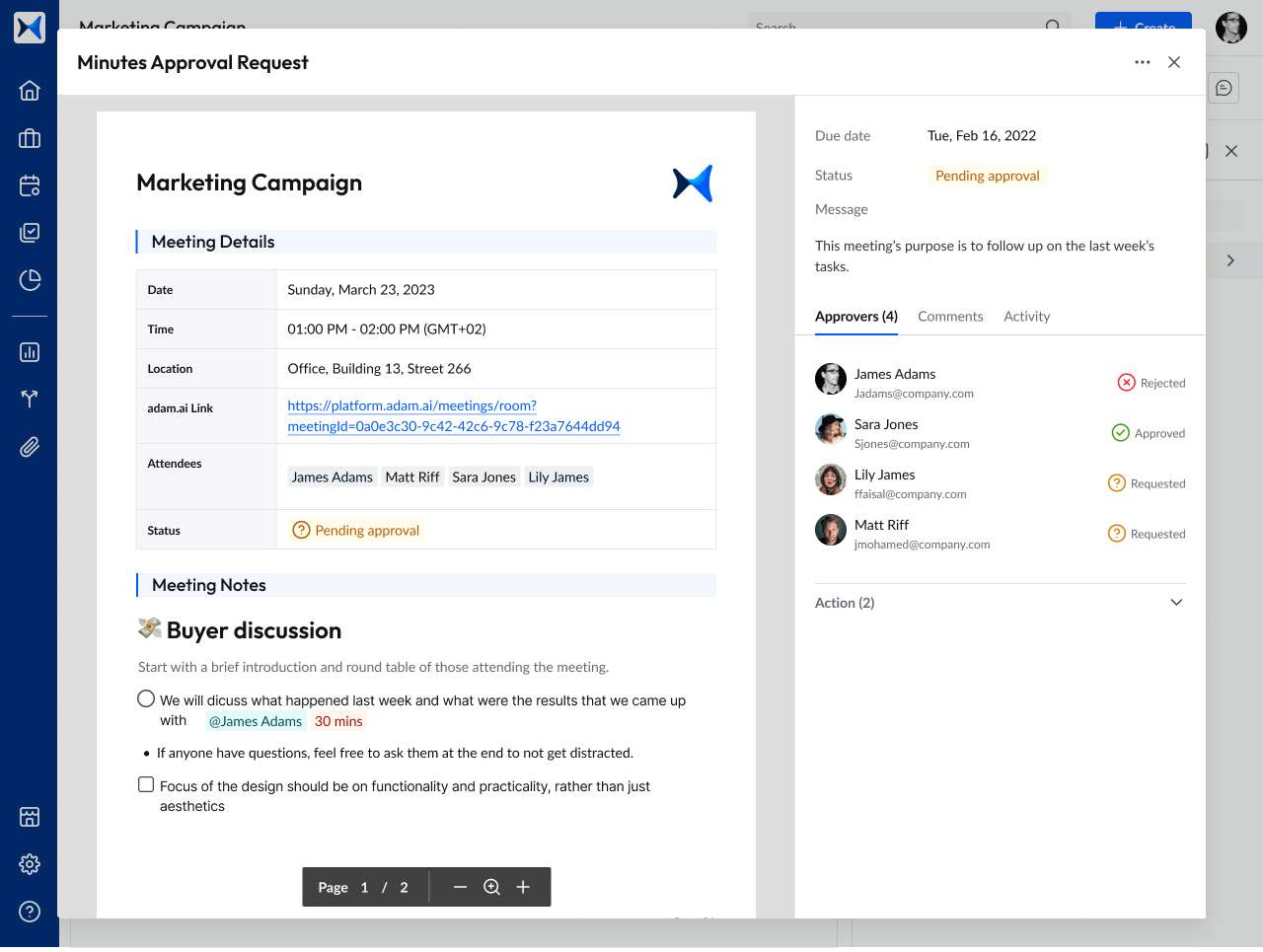
Hack the Code of Taking Top-Notch Meeting Minutes (+Templates)
Read now

Making the Most out of a Hybrid Meeting: A How-to Guide
Read now
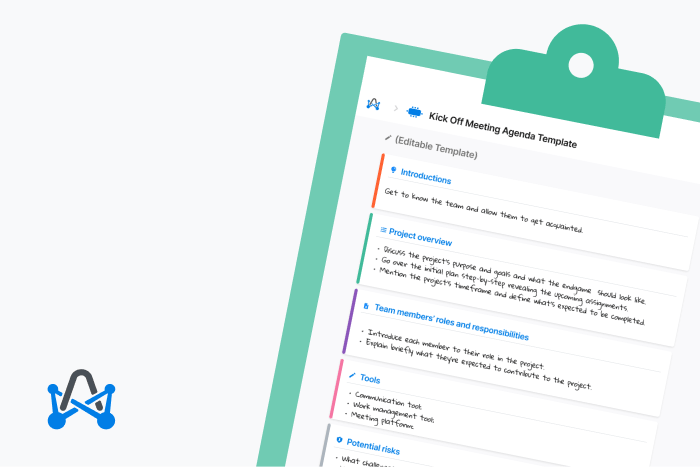
Running Successful Kick Off Meeting (Kick Off Meeting Agenda Template)
Read now
Subscribe to our blog
Subscribe to our blog
Get the latest blog posts sent straight to your inbox.
